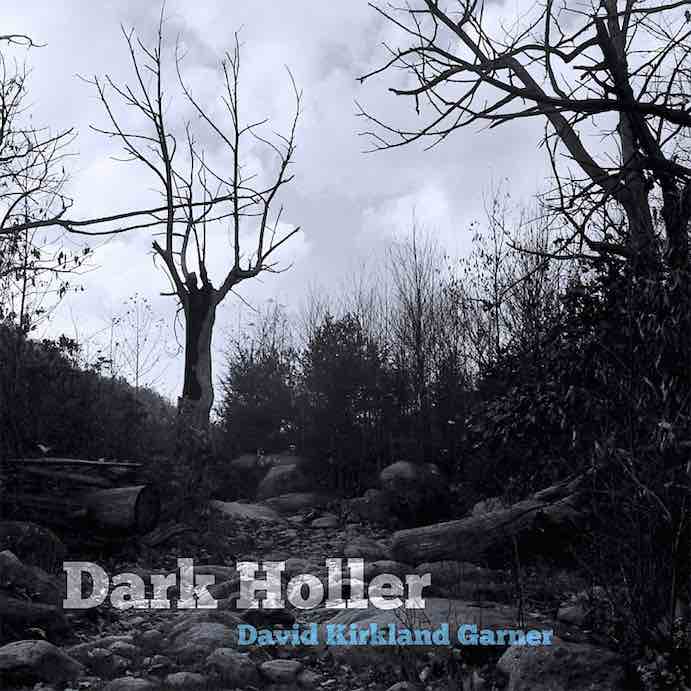With a distinct aesthetic, David Kirkland Garner’s work Dark Holler (New Focus Recordings) weaves pulsive and folk-like textures with occasional Ives-esque layering of melody, rhythm, and harmony. Garner, banjoist and composer, draws inspiration from the folklore of the U.S. South: folk songs and fiddle tunes weaving in occasionally subtle timbral textures to create a unique narrative. Influenced by Clarence Ashley’s tune “Dark Holler,” this album-length work performed by the American Contemporary Music Ensemble shares the same name. The liner notes offer further insight into the inspiration of the work, stating, “Dark Holler draws on American roots music recordings, carrying the listener on a journey across the U.S. South.”
The narrative begins with “Traveller,” using a fiddle tune from New Mexico in 1952. With a quiet, pulsating clank of the piano, a harmonious string texture emerges. Reminiscent of Charles Ives, Garner gains intrigue by brilliantly displacing melody and counter melody, creating a dense rhythmic dissonance on top of the seemingly bitonal moments. A pointillistic groove in the bass line shifts to continually rotate its placement under the dense melodic material, creating a strong forward impetus. At times, “Traveller” follows a simple structural framework, and just before risking predictability, Garner’s impressive sense of pacing shines by altering the narrative–a sudden removal of pulsation wisely reinvents the overlaying rhythmic dissonances.
Ending the narrative of “Traveller,” Garner creates a stark, fragile texture amongst the strings, while a series of sagaciously placed block chords, reminiscent of Louis Andriessen, color the space with impeccable timing. With a gentle orchestration, “Wandering Boy” displays similar intuition to alterations in form to subvert expectation. The string harmonic writing, with its static tones without vibrato, exquisitely blends with the crotales in the riskiest formal moment, seemingly halting time until the strings drop back into standard range.
Continuing the multi-tiered layers of displaced melodic lines, “Devil’s Dream” boisterously presents the same chaotic textures through a turbulent narrative. This culminates in a ruckus interpretation of Hobart Smith’s recording of a fiddle tune. In an unexpected moment, as the fiddle tune seems to climax, Garner again flashes his brilliant sense of timing, ripping away the floor as the rotating baseline falls out. The fiddle tune continues, but only through held breath. In “Interlude,” simplistic melodic writing leaves space for the background colors to shimmer to the forefront, allowing Garner to show off a delicate touch in orchestrating perfect crossfades between instruments. Garner displays an alternate way of breaking apart melodies in “New Railroad,” splitting one line between numerous instruments. The fragmented melody is a refreshing and necessary change of pace from the subsequent movements which all display similar compositional techniques regarding displacement, layering, and melodic development.
David Kirkland Garner
A clearer emotional narrative is heard in “Dark Holler,” using the melody Clarence Ashley recorded under the same title. The work takes on a darker tone with a sustained, booming bass line, while developing a sanguine melody that establishes a deft cognitive dissonance between the layers. The tune, as sung by Ashley, is clearly at the heart of the constantly shifting and haunting melody. In the waning moments, as the “Dark Holler” theme fades out, Garner introduces the pulsing of the bass drum, seemingly as a dirge, while the deep bass drones on. The impressiveness comes not only from the power of these two elements together, but also the risk taken in the finale section; a shorter finale would have been standard and predictable, but Garner’s risk and courage to extend this section makes it the most prodigious moment in the work.
Garner puts his best foot forward with Dark Holler, displaying tenacious manipulations and artful orchestration throughout. Using southern tunes as impetus for a work risks turning into a gimmick, though Garner approaches the delicate situation with an authentic effort to make the Southern songs his own. The work remains familiar as the same compositional tools revolve around melodic augmentation, pulsation, and displaced layering with occasional explorations into ethereal timbres. The majority of the large scale work contains an energetic, fun quality, though more moments, like the vibrant and colorful string writing at the beginning of “Wandering Boy” or the bass and bass drum at the end of the work, could have made for more contrast between movements of similar exuberance.
Garner’s authenticity and energetic writing is equally matched in performance by the American Contemporary Music Ensemble. In particular, Alex Sopp’s piccolo playing in “New Railroad” shows off her technical prowess in an extraordinary display of meticulous leaps and flamboyant pageantry. At the conclusion of the album-length work, Garner’s voice as a composer is unmistakable; with a true passion and inspiration of the music of the South, Garner creates an engaging and lively listening experience.

